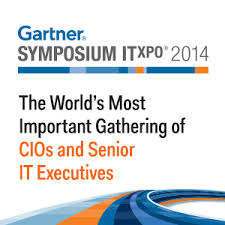Throughout 2014, the CIO profession was subjected to a baffling series of apocalyptic forecasts and dire predictions that have proven to be laughably wrong.
Where did all these distortions and misperceptions about the stewards of IT strategy and execution come from?
Well, times of extreme change and disruption in the business world—and 2014 surely qualified in spades for that designation—always breed lots of theories about what caused all that upheaval and where it will lead.
And since the CIO profession and its attendant IT organization have always been among the most misunderstood siblings in the corporate family, it’s not surprising that their decline, downfall, decimation, and demise were so grandly forecast and greatly exaggerated. Here are a few of my favourite crackpot theories:
- The CMO would kill the CIO: The CIO and the CMO, we were told, were locked in a Texas Cage death match from which only one would emerge alive. Because CMOs have begun to embrace marketing automation technology, this theory went, the CMO would inevitably be in mortal opposition to the CIO.
- Mobile technology would kill the CIO:The CIO and the entire IT organisation would become wards of the CFO as superb mobile technology rendered many/most traditional enterprise systems obsolete. According to this yarn, only core financial apps would require the rigour of traditional enterprise systems, so the CIO would be tucked deeply under the CFO and become little more than a mechanic wearing a green eyeshade.
- Cloud computing would kill the CIO:In this daydream, the CIO and the entire IT organisation would join the woolly mammoth for a nice long dip in the tar pit, as the rise of cloud computing would eliminate any need for businesses to retain deep business-technology vision and strategy.
- Big data and its data scientist masters would kill the CIO:The rise of the omniscient data scientist would lead to a Borg-like collective mentality that would know everything about everything, making IT irrelevant.
But a funny thing happened on those roads to CIO extinction, and here in 2015 we find that the best CIOs are not only alive and well and far from endangered, but are indeed creating more business value than ever before by collaborating eagerly and openly with those supposed forces of opposition. World-class CIOs and IT organisations have never—ever—worked in isolation, and in today’s dizzying high-change business environment, the collaborative approach is paying huge dividends.
In 2015 and beyond, as the full impact of digital disruption takes hold across all industries, the winning organisations will be those in which the CIO engages relentlessly with the CMO, the CFO, the chief revenue officer, the CHRO, the heads of product development and manufacturing, the data scientist, the heads of service and support, and every other line of business leader to help conceive and create the digital enterprise.
Because without that type of collaboration, without that infusion of strategic business-technology capability into every facet of the organisation, businesses will simply be unable to keep pace with the rapidly shifting and escalating wants and needs of customers, whether consumers or businesses.
In that context, I’d like to offer my “Top 10 Strategic CIO Issues for 2015.” And I’d like to begin by sharing my Top 10 lists from the two previous years to offer a sense of continuity and perspective that, in combination with the 2015 list, reveal a profession and a corporate asset that are more relevant, more valuable, and more strategic than ever before.
The Top 10 Strategic Issues for 2013
- Simplify IT and Transform You’re Spending: Kick the 80/20 Budget Habit.
- Lead the Social Revolution: Drive the Social-Enabled Enterprise.
- Unleash Your Company’s Intelligence: Create the Enterprise-wide Opportunity Chain.
- Embrace the Engagement Economy: Merge the Back Office and the Front Office into the Customer Office.
- Future-Proof Your IT Architecture.
- Upgrade “Cloud Strategy” to “Business Transformation Enabled by the Cloud.”
- Transform Big Data into Big Insights, Big Vision, and Big Opportunities.
- Preside over a Shotgun Wedding: Systems of Record Marry Systems of Engagement.
- Lead with Speed: CIO as Chief Acceleration Officer.
- Bend the Value Curve: More Innovation, Less Integration.
Next, The Top 10 Strategic CIO Issues for 2014
- Drive Customer-Centric Innovation Throughout Your Organisation.
- Why the Internet of Things Will Turn Your Business Upside Down.
- Shatter the Legacy Model of IT Budgeting and Expectations.
- Dazzle Your Customers—Make Them Love Your Company!
- Who’s on First? It’s a Mobile-First, Cloud-First, and Social-First World.
- Blending Art and Science: Why Product Development and IT Must Collaborate.
- Don’t Fight Tomorrow’s Wars with Yesterday’s Technologies.
- Embrace Your Ultimate Metrics: Customer Loyalty Moves to the Front.
- Tie IT Compensation to Knowledge-Worker Productivity.
- Design and Deliver the Transparent Enterprise.
Clearly, all of those initiatives from 2013 and 2014 need to continue into 2015 and beyond, but for this year’s top CIO imperatives, I’ve broken the list into four categories that reflect the multifaceted capabilities the modern and business-driven CIO must have, and the wide-ranging responsibilities such executives deserve to have.
As you’ll see below, those four subsets are Business Transformer, Customer Expert/Advocate, Business-Technology Visionary, and Culture Warrior.
Here’s the 2015 Top 10 list, followed by an overview of each item.
The Top 10 Strategic CIO Issues for 2015
The Business Transformer
1) Be the joyful digital disruptor, not the hesitant and befuddled digital disruptee.
2) Accelerate insights, decision-making, and operations: function as the Chief Acceleration Officer. Yes, this is the same as #9 on the 2013 list, but it not only bears repeating, but deserves a promotion up the list.
3) Forge strategic and deep relationships with the CMO, CHRO, CFO, and beyond.
The Customer Expert and Advocate
4) Harness the enterprise-wide power and potential of customer-centric big data and analytics.
5) Unlock insights and capabilities that let every employee contribute to customer loyalty.
The Technology Visionary
6) Modernise and simplify: Exploit cloud computing to help achieve each item on this list.
7) Re-imagine your security strategy as globalisation and mobility redefine privacy and risk.
The Culture Warrior
8) Be the strategic evangelist for turning social from tactical sidelight to strategic growth engine.
9) Embrace new HCM outlooks and tools to make your department—and your entire company—a high-demand destination for world-class talent.
10) Transform the IT organisation and reputation from no to yes, from SLAs to revenue growth, from obstacle to accelerator, from passive to opportunistic.
To carry on reading this piece, please visit the original article here.
Full credit for the article to Bob Evans, SVP and Chief Communications Officer for Oracle








